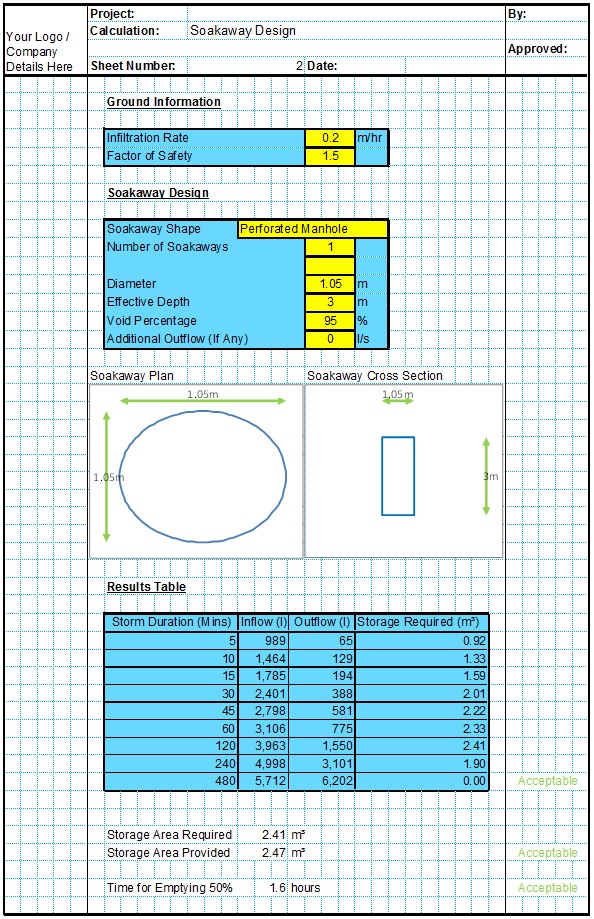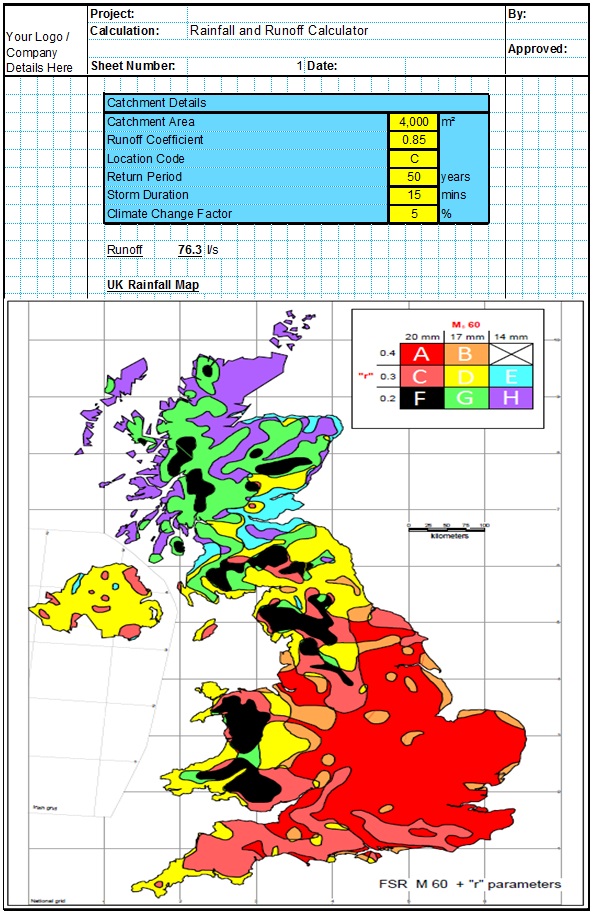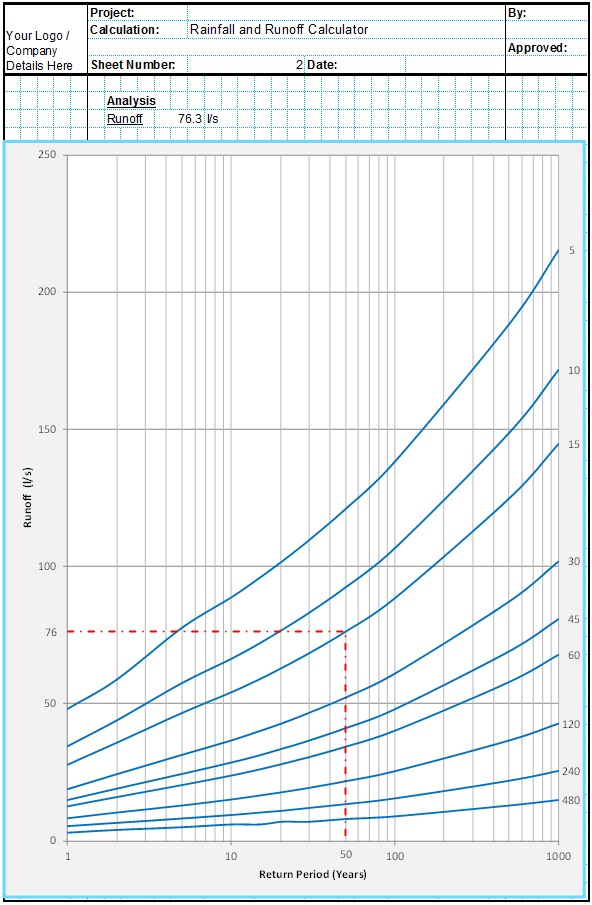Blocked soakaways are a common rainwater soakaway problem, often occurring in garden drainage and driveway soakaways. Blocked soakaways often happen when the soakaway system is not maintained regularly enough which is a very common occurrence. A blocked soakaway will not be able to dispose of the water from rainfall events quickly enough which causes the soakaway system to overflow and flood following heavy rainfall or prolonged wet weather.
Reasons for Blocked Soakaways
Soakaways become blocked when small sediments are allowed to enter the soakaway chamber. This is a common problem in conventional soakaway pits, trench soakaways, deep bore soakaways and soakaway crates. These small sediments slowly build up inside the soakaway and the surrounding soils blocking the soil pores, reducing the rate of water infiltration through the soakaway. The base of a soakaway is often affected quite quickly, and for this reason soakaway design procedures include a base infiltration factor to account for silt build up reducing the infiltration rates achieved through the base of the soakaway.
This is particularly a concern when the sediments entering the soakaway system are a similar size to the pores in the infiltration medium. If the sediments entering the soakaway are the same size or larger than the pores in the infiltration medium then the sediments do not significantly affect the infiltration rate through the soakaway. This can sometimes be the case for soakaways installed in silty or clay soils. The type of sediments likely to enter the soakaway depends on the characteristics of the catchment area.
Other Potential Causes of Blocked Soakaways
Where two or more soakaways are linked in series, this will produce a larger maintenance requirement on the first soakaway in the chain as the majority of sediments will be deposited in this soakaway. This should be considered in the soakaway maintenance plan through more frequent inspections and maintenance of the first soakaway in the chain.
Preventing Sediments from Entering the Soakaway
Sediments can be prevented from entering the soakaway by installing a suitable sediment interception method upstream of the soakaway. If designed correctly and maintained this can prevent the majority of sediments from reaching the soakaway, therefore increasing the soakaways useful life and reducing the overall maintenance requirements.
Simple source control methods such as ensuring that paved surfaces are regularly swept and roofs are regularly cleaned can have a big impact on the level of sediments entering the soakaway system. Any source control measures should be included within the soakaway maintenance plan to ensure that they are completed and their purpose is not forgotten over time.
The CivilWeb Soakaway Design spreadsheet allows for these effects at design stage by including a Factor of Safety which relates to the expected sedimentation and associated reductions in the design infiltration rate.
Soakaway Inspections and Maintenance Requirements
It is recommended that soakaways are regularly inspected for at least the first 6 months of operation to determine the performance of the soakaway after heavy rain and to estimate the quantities of sediment which will accumulate in the soakaway over time. These inspections should be monthly.
Inspections should also be done to any sediment interception methods employed upstream of the soakaway to determine the quantities of sediment intercepted. This will assist in finalizing the inspection and maintenance schedules for these items.
After the initial 6 months the frequency of inspection can be set at an appropriate level suitable to the soakaways particular needs. This is likely to be every 6 - 12 months. It is also useful to inspect the soakaway several times after a particularly heavy storm so that the storage capacity and the time of emptying of the soakaway can be evaluated.
Soakaway Inspection and Maintenance Plan
The best way to prevent a soakaway from eventually becoming blocked is to implement a thorough and frequent inspection and maintenance programme. If maintained properly a soakaway will remain effective for very long periods, maybe 50 years or more.
The regular maintenance of soakaways is absolutely essential if they are to perform as designed for their full design life. Suitable regular maintenance will prevent the soakaway and surrounding soils from being clogged up, which will prevent the system needing to be replaced. This will also prevent the inlets and outlets from becoming blocked and prevent standing water in the soakaway. This is typically achieved by the creation of a maintenance and inspection plan.
An example inspection and maintenance schedule is shown below;
| Inspections & Monitoring (Every 6 Months) |
| Inspection of Soakaway Structures |
| Inspection of Inlets & Outlets |
| Monitoring of Performance after Heavy Rain |
| Inspection for Tree Roots |
| Inspection of Sediment Interception Methods |
| Inspection of Catchment for Erosion |
| Inspection of Surface for Settlement |
| Inspection for Signs of Pollution |
| Regular Maintenance (Every 3 Months) |
| Removal of Litter & Debris (Soakaway) |
| Removal of Litter & Debris (Sediment Interception Methods) |
| Sweeping of Paved Surfaces |
| Cleaning of Roof Gutters |
| Occasional Maintenance (Every 12 Months) |
| Removal of Tree Roots |
| Tree/Shrub Management |
| Sediment Removal (Soakaway) |
| Sediment Removal (Sediment Interception Methods) |
| Cleaning of Inlets & Outlets |
| Cleaning of Pipework |
| Remedial Maintenance (When Required) |
| Full Structure Rehabilitation |
| Infiltration Surface Reconditioning |
Blocked Soakaway Repairs and Rehabilitation
In the event that maintenance works are not completed or are ineffective, a typical soakaway will require rehabilitation every 10-25 years. The frequency will depend on the level of effective maintenance, the level sediment interception methods employed upstream and the quantity and type of sediments present in the runoff.
Access arrangements for rehabilitation should be allowed for at design stage. The requirements will be similar to those required for maintenance and should not entail any major disruption to adjacent buildings or surfaces.
Regular inspections should identify when a soakaway is becoming clogged with sediments. This will be apparent when the soakaway is retaining water for a long time after a heavy rain storm.
The rehabilitation of a soakaway often requires the removal of the existing backfill and geotextile along with the surrounding soils immediately surrounding the soakaway. This work should be undertaken to the same standards and construction methods as described for a new soakaway. This provides the soakaway with a fresh infiltration surface and in most cases should operate as a new soakaway.
Related Spreadsheets from CivilWeb;
Soakaway Design Spreadsheet
This spreadsheet calculates the requirements for a soakaway system and assists the user to design a suitable system.
Attenuation Design Spreadsheet
This spreadsheet calculates the requirements for a attenuation system and assists the user to design a suitable system.
Runoff Calculator Spreadsheet
This spreadsheet calculates the design runoff flow for a site in accordance with the a number of different methods including the Wallingford Procedure.
Full Drainage Design Suite
Full drainage design suite (50% Discount) including 7 spreadsheets;
- Colebrook White Pipe Design
- Manning Pipe Design
- Manning Open Channel Design
- Linear Drainage Design
- Runoff Calculator
- Attenuation Design
- Soakaway Design



